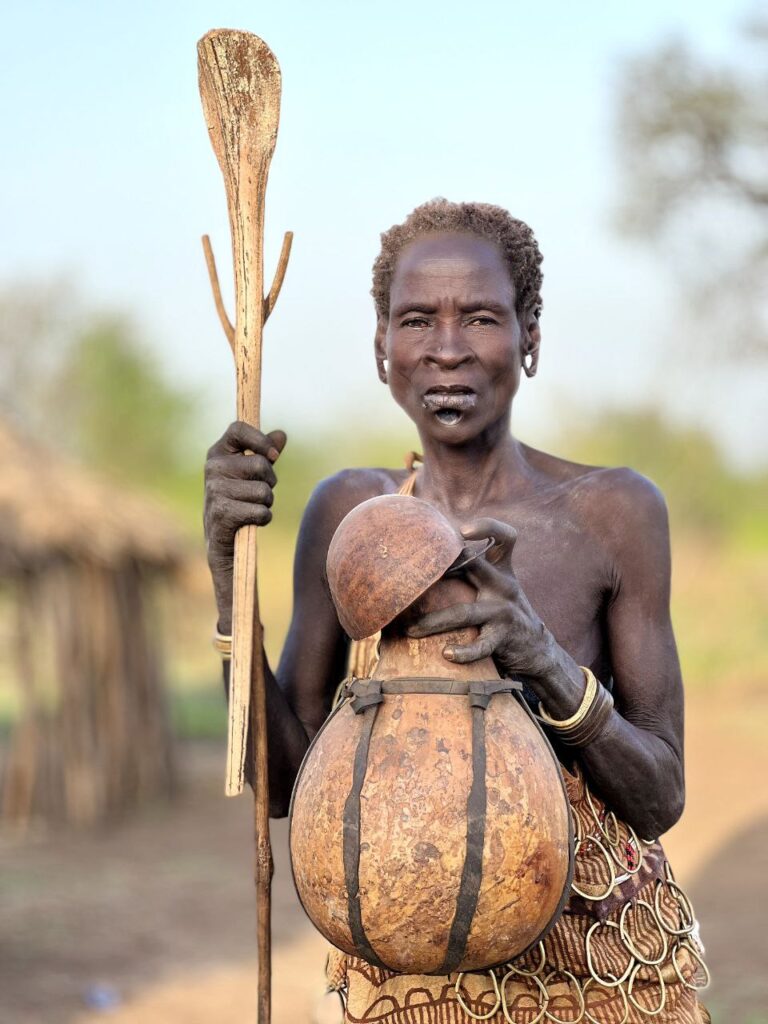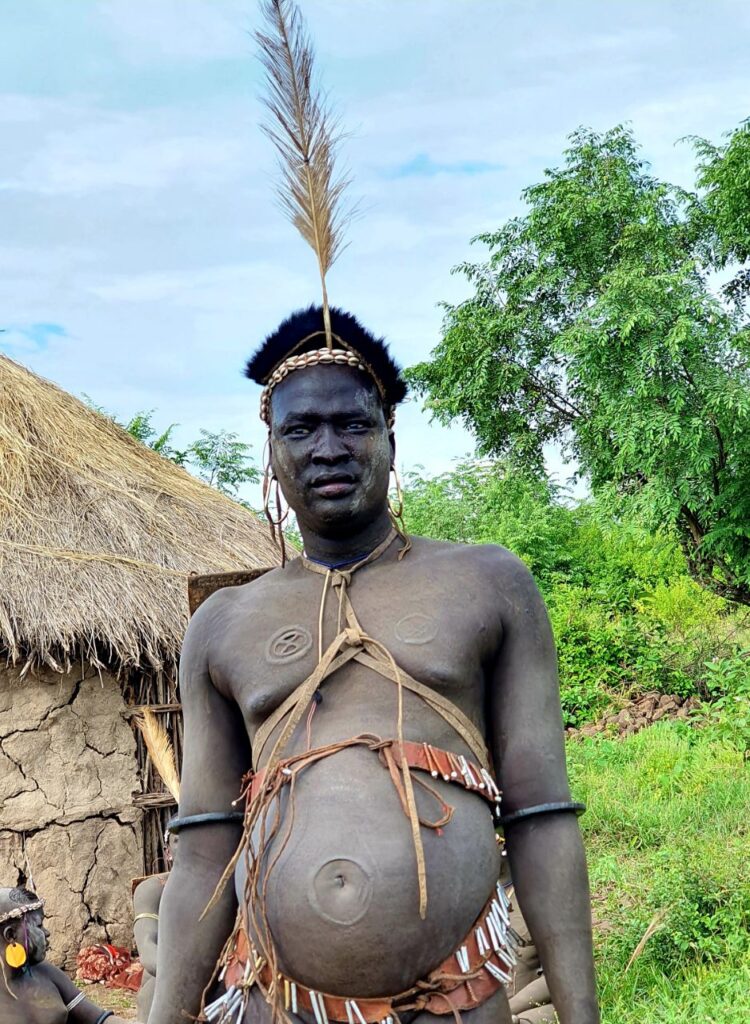The Bodi live in the Omo valley north of the Mursi. They number about 15,000 people. They speak the Me’en language they call themselves Me’en people. The Me’en are composed of several local groups of about 70,000 people whose territory stretches from the Omo River to the highlands north and northeast of Maji. Two groups of Me’en, the Mela and the Chirim, live in the lowlands east of the Omo and are known to the administration and foreigners as ‘Bodi’.
The livelihood of the Bodi is much the same as those of the Mursi: as amongst other pastoralists in Omo Valley, Bodi livelihoods and cultural expression revolve around cattle. They also practice agriculture ad well.
Their territory is crossed from east to west by two rivers, the Hana and the Gura, which originate in the Dime highlands and flow most of the year. These reliable sources of water mean that the Bodi have to move less often than their Mursi neighbors.
The Bodi and the Mursi have many cultural features in common. Regarding bodily decoration, the most notable difference is that Bodi women wear a lip-plug, and not a lip-plate. Another difference is that Mursi girls pierce and stretch their lower lips upon reaching puberty, while Bodi women cut their lower lips only after they have given birth to two or three children.
A Bodi woman then stretches her lip so that she can insert a finely carved wooden plug, generally the size of a coin. Rather than sexual maturity, the Bodi lip-plug signals a woman’s achievement of the role of mature mother. The plug, worn all the time, is coated with butter and red ochre, and pierced in the centre with a small wooden spike. The Bodi also wear the lip-plug to serve as an identity marker and they often refer to themselves in public debates as ‘the people who pierce the lip-plug’.
The Bodi have earned some local fame for their annual ceremony, the ke’êl. Around mid-June, the Bodi celebrate the beginning of a new year. Men of various ages feed themselves exclusively with milk and blood for several months in order to have fat but firm bodies with protruding bellies. The community gathers at the place of the local priest (komorut) and the men who have undergone this bodily transformation dance in circles, each local group being represented by one or more circles of men.
They sing songs to glorify their priest and the fierceness of their group. Each Mela komorut holds the ke’êl dance successively. This is an important moment of festivities for the whole community. It is tinged with competition between the local groups because everyone assesses the participants, who are valued for the fatness and impressiveness of their bodies. After the ceremony, men resume a normal diet and lose weight rapidly since, in daily life, a fat body is recognized to be an impediment to general health and fitness. Outside of the context of the ke’êl, women and girls generally value a man’s beauty based on his height or stature.


